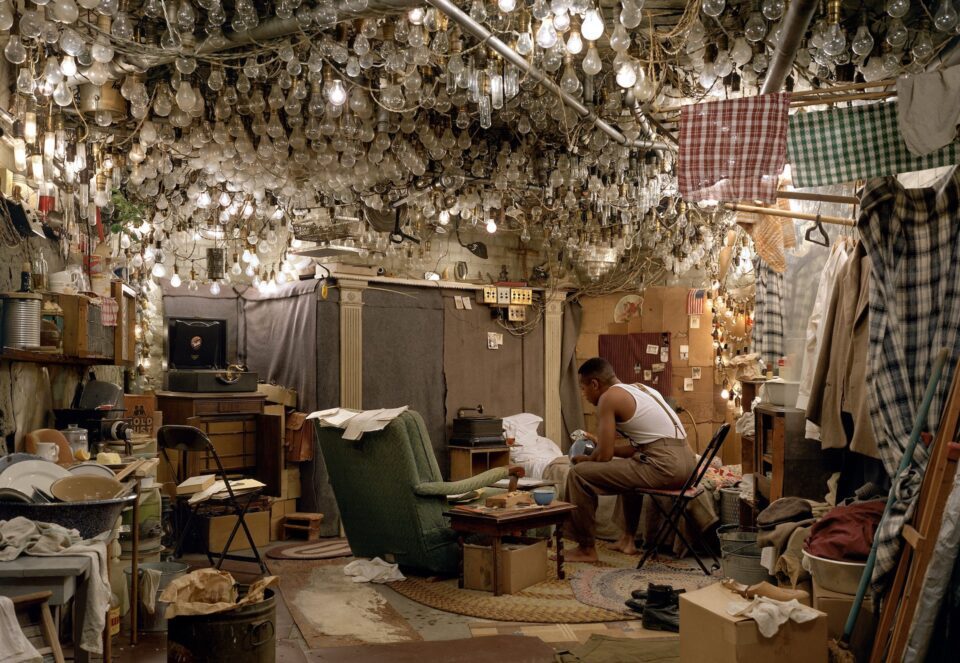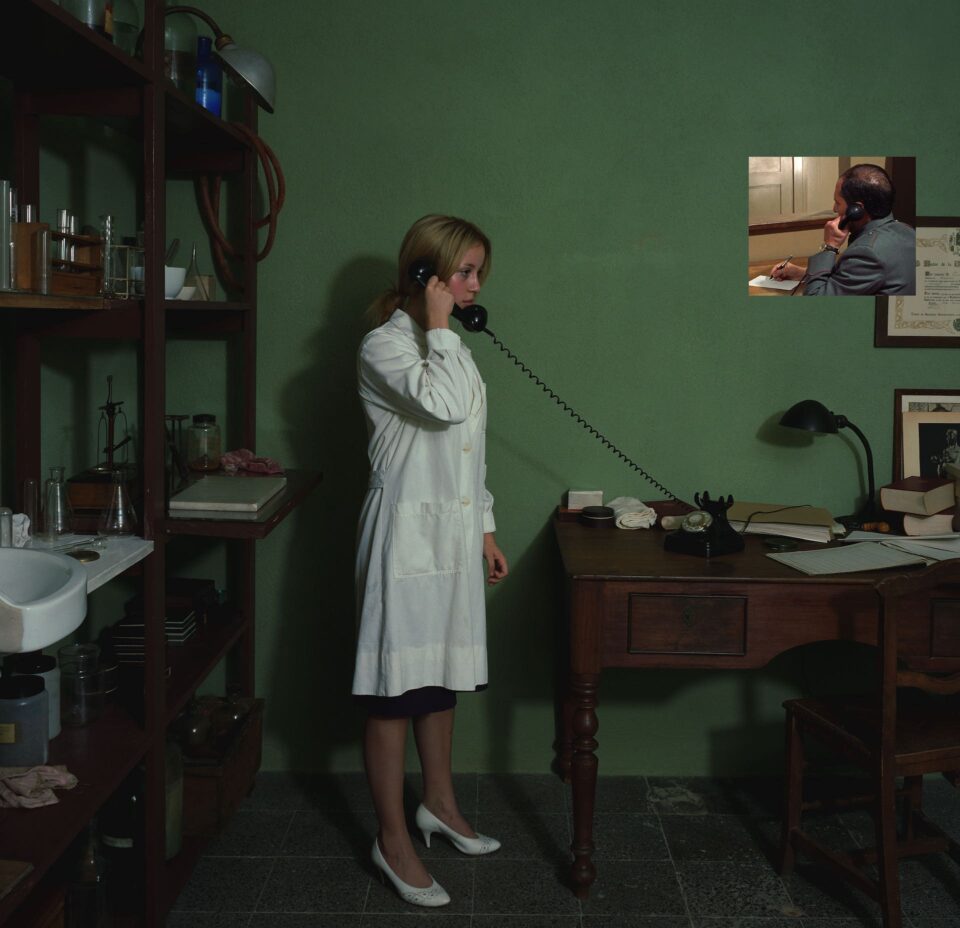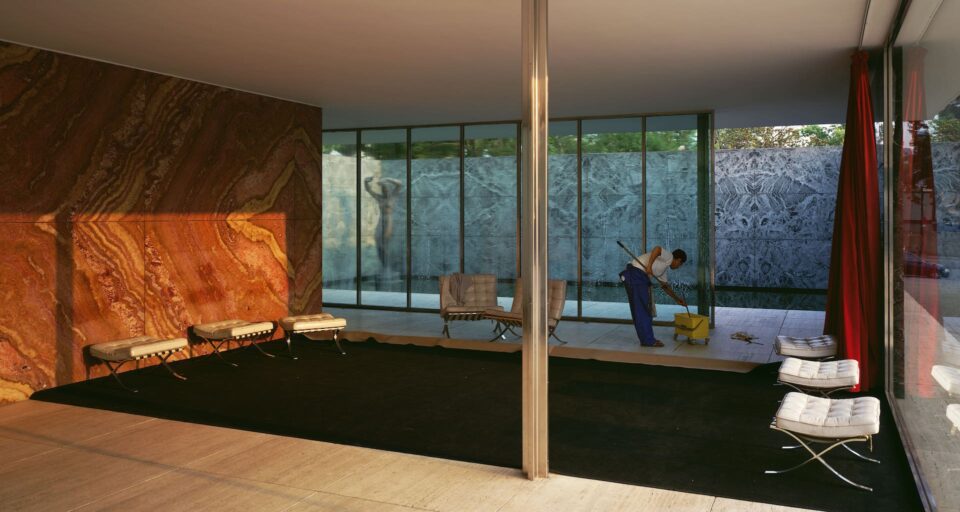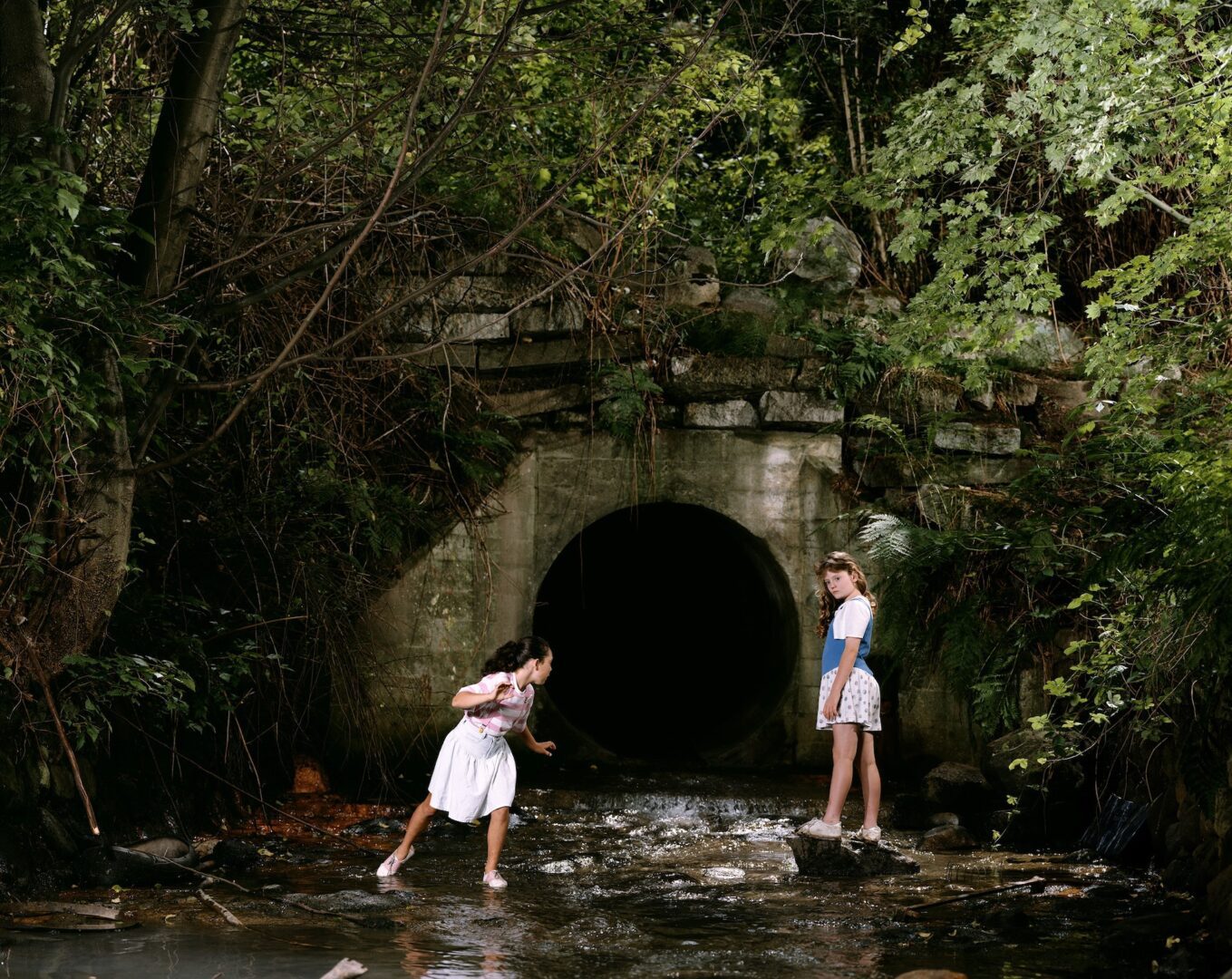Few contemporary photographers have reshaped our understanding of the medium as profoundly as Jeff Wall. Born in Vancouver in 1946, Wall has, over the course of more than four decades, transformed the photographic image into a site of careful observation, cinematic staging, and critical reflection. His work is distinguished not by the fleeting capture of reality but by the painstaking construction of images that blur the line between documentary precision and imaginative invention. As he himself notes, “I’m not a hunter of images,” a statement that underscores his deliberate, almost painterly approach to photography – a method that has inspired generations of artists worldwide.
Wall’s early works in the 1970s and 1980s already marked him as a visionary. Employing large-scale lightbox photographs, he elevated everyday scenes into tableaux of uncanny beauty and narrative richness. From Mimic (1982), which portrays a violent confrontation on a Vancouver street with the intensity of a theatrical performance, to The Storyteller (1986), a portrait of reflective solitude, Wall consistently challenges viewers to reconsider the boundaries of photographic realism. His work has been shown at leading international institutions, including Tate Modern, London; MoMA, New York; the San Francisco Museum of Modern Art; and the Deutsche Guggenheim, Berlin, where his images, whether black-and-white prints or luminous lightbox displays, have left indelible impressions on audiences.

Throughout his career, Wall has navigated themes both intimate and societal: the everyday and the extraordinary, the personal and the political. War, gender, class, and race recur in his work, approached with a nuanced visual intelligence that resists facile interpretations. In pieces such as After “Invisible Man” by Ralph Ellison, the Prologue (1999), Wall negotiates literature and visual culture, drawing on Ellison’s narrative to interrogate race and identity in contemporary society. Similarly, his homage to art history – seen in photographs referencing Rodin, Hokusai, Manet, and Delacroix—reveals a commitment to visual dialogue across time and culture, making each work not merely an image but a conversation with art itself.
The significance of Wall’s work is now celebrated in a new exhibition at the Gallerie d’Italia – Turin, curated by David Campany, Creative Director of the International Center of Photography in New York. JEFF WALL. PHOTOGRAPHS presents 27 works spanning his career from the 1980s to 2023. As Michele Coppola, Executive Director of Art, Culture and Historical Heritage at Intesa Sanpaolo, says: “Bringing Jeff Wall’s ‘Photographs’ to the Gallerie d’Italia in Turin reaffirms the identity of a space open to the city, offering opportunities for engagement and in-depth exploration with leading figures in international art. We are presenting some of the most significant images by the renowned Canadian artist which, situated between photography and cinema, portray the complexity of the contemporary world and draw in the public – also thanks to the large scale of the works, which enhances their evocative power.” Coppola’s words highlight how Wall’s monumental approach – the life-sized, meticulously staged images – imbues photography with the immersive presence more commonly associated with painting and cinema.

The exhibition is an exploration of Wall’s sustained engagement with narrative and form. Visitors encounter a selection of his most renowned lightbox photographs, their luminescent surfaces evoking advertising language yet charged with critical depth. The Gardens (2017), a triptych set in Villa Silvio Pellico near Turin, demonstrates Wall’s fascination with temporal and spatial ambiguity: three sequential images show figures moving through a maze of hedges, their doubles suggesting themes of exile, repetition, and reflection. Here, Wall’s interplay of narrative and visual structure is emblematic of his broader practice, where composition, timing and gesture converge to produce images that are familiar and disorienting.
Wall’s influence resonates widely among contemporary photographers. Andreas Gursky, for example, shares Wall’s interest in the monumental and the socially observant. Gursky’s sweeping vistas of urban and commercial spaces echo Wall’s precision and attention to human activity, transforming ordinary settings into visual spectacles of cultural critique. Similarly, Cindy Sherman’s interrogations of identity and performance can be traced back to Wall’s manipulation of staged scenarios and narrative construction. Sherman’s self-portraits, like Wall’s tableaux, destabilize assumptions about reality, revealing the theatricality underlying seemingly candid moments. Meanwhile, Gregory Crewdson extends Wall’s cinematic sensibility into the American suburb, creating elaborately staged scenes illuminated with dramatic lighting that evoke suspense, isolation and narrative ambiguity. All three, in their distinct ways, owe a conceptual debt to Wall’s insistence on blending meticulous production with social observation.

Returning to the Turin exhibition, visitors are invited to consider Wall’s work as both art historical and contemporaneously relevant. His references to Italian Neorealism, literature, and classical painting infuse his images with layers of meaning, bridging past and present. The exhibition also foregrounds Wall’s role as a thinker and storyteller: each tableau is a meditation on human experience, carefully orchestrated yet open to interpretation. The inclusion of recent works up to 2023 demonstrates the artist’s continued innovation and relevance, showing that even after decades of practice, Wall’s vision remains compelling.
In presenting this exhibition, Intesa Sanpaolo not only underscores Wall’s global significance but also emphasizes the importance of public engagement with contemporary art. Coppola reflects: “Showcasing the work of one of the most important living photographers confirms the Bank’s commitment to promoting culture as a shared value, encouraging new reflections on the main issues of our time.” Indeed, in a world increasingly dominated by ephemeral digital imagery, Wall’s painstakingly constructed photographs remind us of the enduring power of careful observation, meticulous craft, and narrative depth.
JEFF WALL. PHOTOGRAPHS in Turin is a celebration of a photographic language that continues to shape contemporary visual culture. With life-size works that command attention, an array of subjects spanning four decades, and the subtle interplay of reality and artifice, the exhibition affirms Wall’s place not only as a master of the photographic tableau but as an essential voice in understanding the complexities of modern life. Visitors are invited to linger, reflect, and be captivated – immersed in a universe where the ordinary becomes extraordinary, and where every image tells a story waiting to be uncovered.
Jeff Wall. Photographs is at Gallerie d’Italia, Turin, until 1 February.
Words: Simon Cartwirght
Image Credits:
1. Jeff Wall, The Drain, (1989). Transparency in lightbox 229.0 x 290.0 cm.
Courtesy of the artist and White Cube.
2. Jeff Wall, After ‘Invisible Man’ by Ralph Ellison, the Prologue, (1999 – 2001). Transparency in lightbox 174 x 250.5 cm. Courtesy of the artist.
3. Jeff Wall, Informant, An occurrence not described in chapter 6, part 3 of Últimas tardes con Teresa by Juan Marsé, (2023). Inkjet print 136 .3 x 141 cm. Courtesy of the artist.
4. Jeff Wall, Morning Cleaning, Mies van der Rohe Foundation, Barcelona, (1999). Transparency in light box 187 x 351 cm. Courtesy of the artist.





